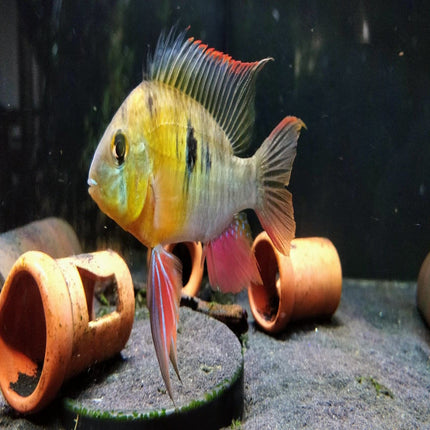[ARRIVED 21-AUG-2025] Bolivian Ram (Local Bred) 3-5cm
[ARRIVED 21-AUG-2025] Bolivian Ram (Local Bred) 3-5cm
Bolivian Ram: The best Dwarf Cichlid for the Community Aquarium? (Adult Breeder Pictured, only juveniles are for sale) Bolivian Rams... Read more
Free pickup in our shop(s)
$20.00
All prices include GST- 100% Satisfaction Guaranteed
- Live Guaranteed to your Home or Office
- Price Match Available
- Shipped today? Order within:

